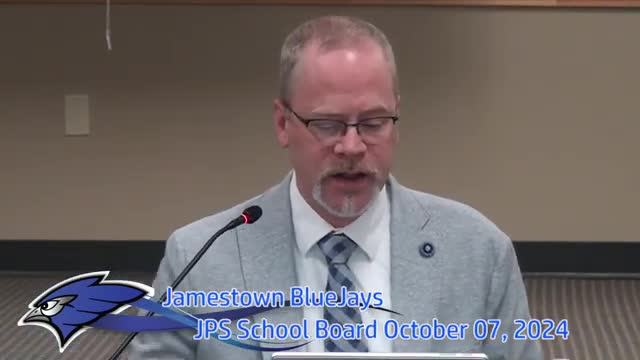School District Struggles to Combat Chronic Absenteeism
October 07, 2024 | JAMESTOWN 1, School Districts, North Dakota
This article was created by AI summarizing key points discussed. AI makes mistakes, so for full details and context, please refer to the video of the full meeting. Please report any errors so we can fix them. Report an error »

During a recent board meeting, officials discussed the ongoing challenge of chronic absenteeism within the district, emphasizing a goal to reduce the rate to 12%. This target is notably lower than both the state and national averages, which are significantly higher. The definition of chronic absenteeism used aligns with state and federal standards, identifying students who miss 10% or more of their enrolled days after attending school for more than 10 days.
Last year, the district reported a chronic absenteeism rate of 15%, falling short of the aspirational 12% goal. Despite initial expectations of nearing this target, finalized data revealed stagnation at 14-15% over the past few years. The board acknowledged the need for improvement and highlighted that the subgroup of homeless students continues to exhibit the highest rates of absenteeism, although there has been a notable 20% decrease in this group over the last three years.
Positive trends were observed among other subgroups, including English learners, Native American, and Hispanic students, all of whom have shown significant decreases in absenteeism. Conversely, the rate among Black students has steadily increased, while absenteeism rates for low-income students and those with disabilities have remained largely unchanged.
At the building level, the high school has reported decreases in absenteeism across all subgroups, marking a significant achievement. However, the middle school has seen an increase, now reaching 20%, driven primarily by students with disabilities, English learners, and low-income students. The board emphasized the importance of cautious interpretation of data, particularly for smaller subgroups, as fluctuations can lead to larger perceived shifts.
The meeting underscored the district's commitment to addressing chronic absenteeism through targeted strategies and continuous improvement efforts, with a focus on supporting the most affected student populations.
Last year, the district reported a chronic absenteeism rate of 15%, falling short of the aspirational 12% goal. Despite initial expectations of nearing this target, finalized data revealed stagnation at 14-15% over the past few years. The board acknowledged the need for improvement and highlighted that the subgroup of homeless students continues to exhibit the highest rates of absenteeism, although there has been a notable 20% decrease in this group over the last three years.
Positive trends were observed among other subgroups, including English learners, Native American, and Hispanic students, all of whom have shown significant decreases in absenteeism. Conversely, the rate among Black students has steadily increased, while absenteeism rates for low-income students and those with disabilities have remained largely unchanged.
At the building level, the high school has reported decreases in absenteeism across all subgroups, marking a significant achievement. However, the middle school has seen an increase, now reaching 20%, driven primarily by students with disabilities, English learners, and low-income students. The board emphasized the importance of cautious interpretation of data, particularly for smaller subgroups, as fluctuations can lead to larger perceived shifts.
The meeting underscored the district's commitment to addressing chronic absenteeism through targeted strategies and continuous improvement efforts, with a focus on supporting the most affected student populations.
View full meeting
This article is based on a recent meeting—watch the full video and explore the complete transcript for deeper insights into the discussion.
View full meeting
